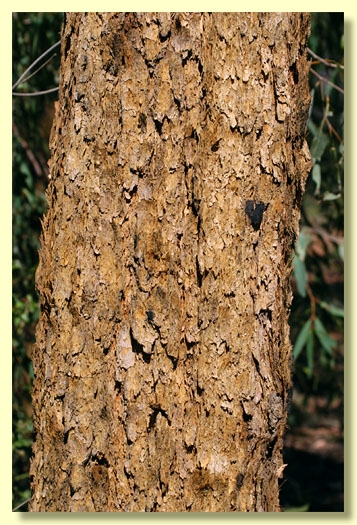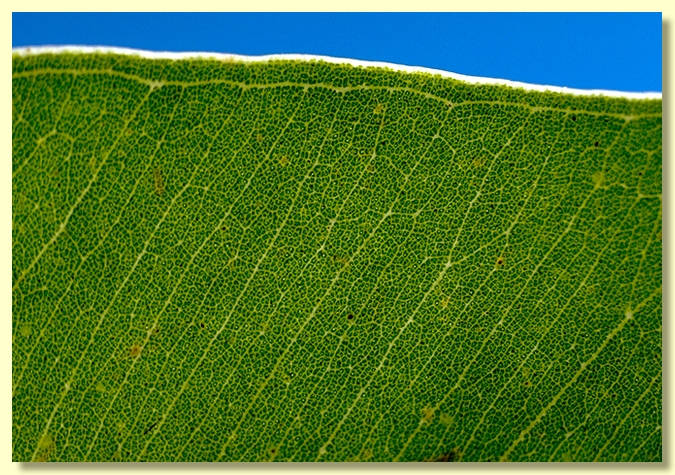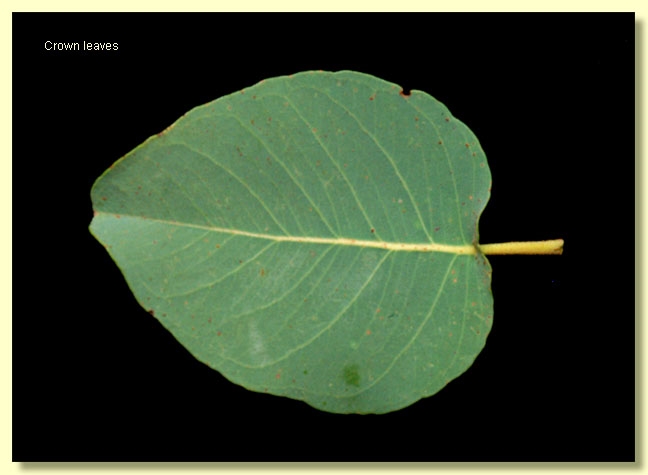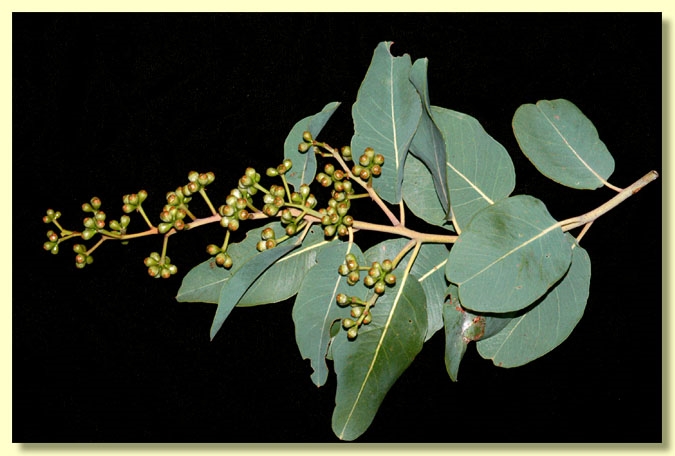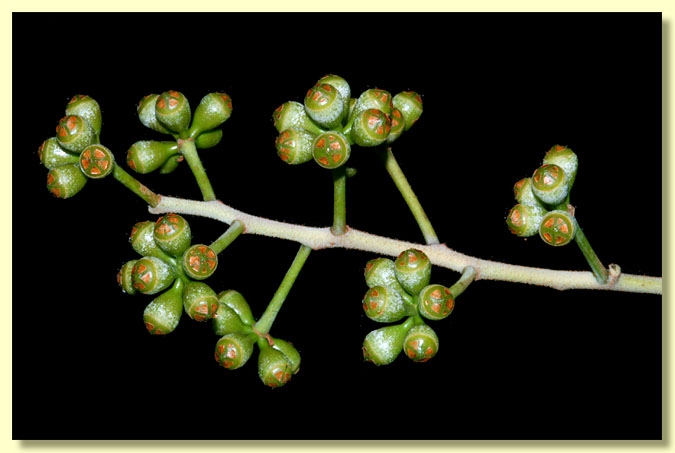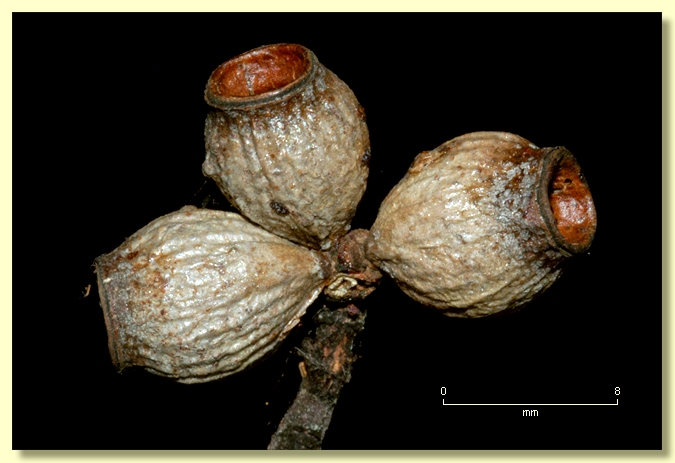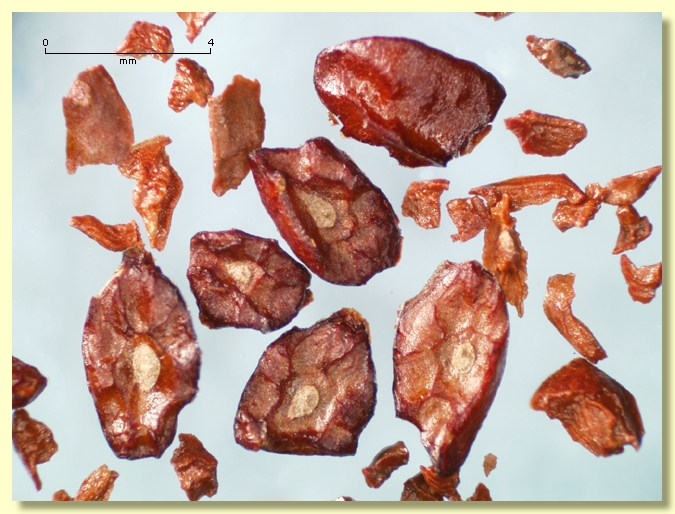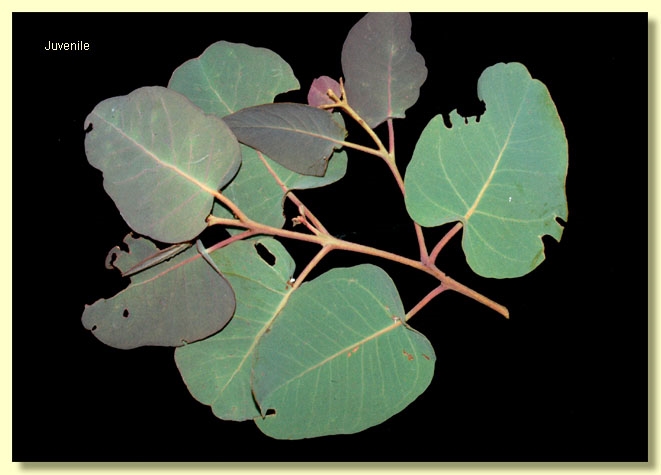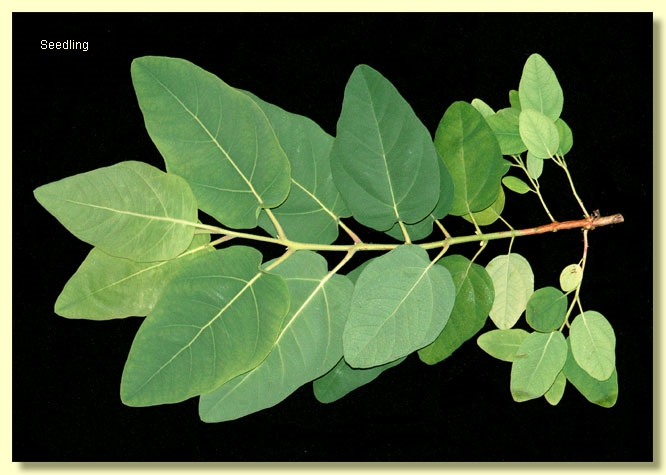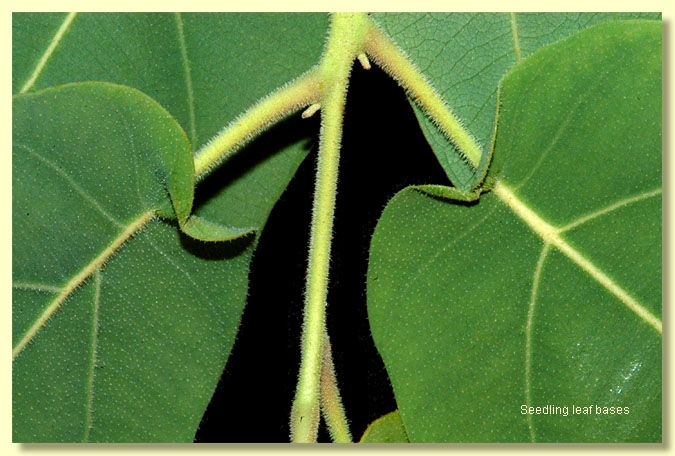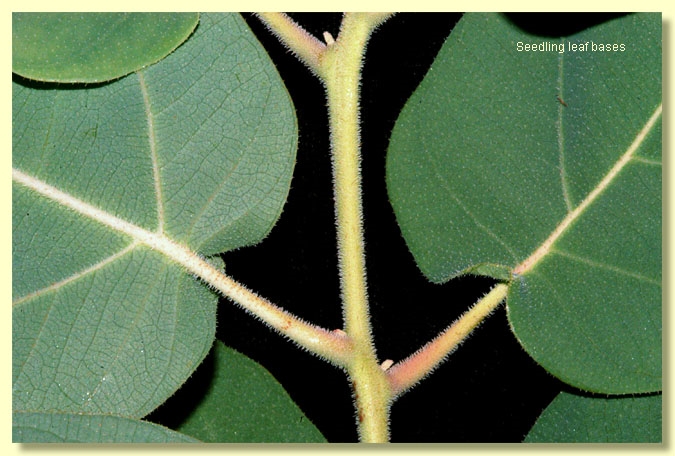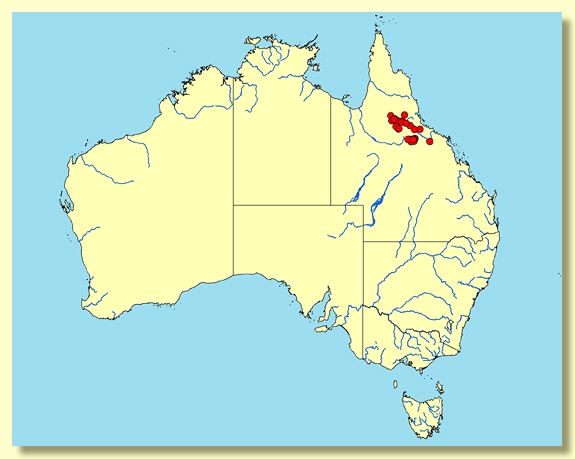Euclid - Online edition
Corymbia peltata
Corymbia | Ochraria
Tree to 10 m, rarely 20 m tall. Forming a lignotuber.
Bark rough to limbs ca 5 cm diameter, tessellated to finely flaky, yellow-brown to yellow-grey with a hint of orange.
Branchlets scabrid with setae or their weathered remains; elongated oil bodies often present in the pith.
Juvenile growth (coppice or field seedlings to 50 cm): stem rounded to square in cross-section; juvenile leaves opposite, always petiolate, ± orbicular to ovate or elliptical, 6–21 cm long, 4–12 cm wide, base lobed and peltate, green; setose with bristle-glands, becoming scabrid as these weather, on stems, petioles and lamina.
True alternate petiolate lanceolate.
Adult leaves very rarely formed and then only a very small part of the total crown leaves and still scabrid. Crown predominantly of scabrid juvenile leaves, opposite to sub-opposite or occasionally alternately arranged, petiole 1–2.6 cm long; blade sub-orbicular to ovate-elliptic, (4.3)6–13.5 cm long, 3.5–11 cm wide, flat or undulate, base of most leaves peltate, rarely rounded to lobed, apex rounded or emarginate, margin usually entire, concolorous, dull, green to grey-green, penniveined, densely to very densely reticulate, intramarginal vein parallel to and just within margin, oil glands island.
Inflorescence terminal compound, peduncles 0.8–3.2 cm long, buds 7 per umbel, sessile or pedicellate (pedicels to 0.3 cm long). Mature buds obovoid, 0.6–0.7 cm long, 0.4–0.5 cm wide, white on surface due to rubbery cuticle (not wax), scar present (outer operculum shed early), operculum rounded and umbonate to conical, stamens inflexed, anthers ± oblong, versatile, dorsifixed, dehiscing by longitudinal slits (non-confluent), style long, stigma tapered, locules 3, the ovules not arranged in clear vertical rows on the placentae. Flowers white.
Fruit sessile or shortly pedicellate (pedicels 0–0.1 cm long), barrel-shaped to urceolate or truncate-globose, 0.7–1.4 cm long, (0.6)0.8–1.2 cm wide, disc descending, valves 3, enclosed.
Seeds reddish brown and shiny, 3–6 mm long, boat-shaped with a keel on the smooth and usually cracked dorsal surface, not winged, but some seeds have a short flange at one end, hilum ventral.
Cultivated seedlings (measured at ca node 10): cotyledons large, reniform to orbicular; stems rounded in cross-section, setose throughout; leaves always petiolate (to 2.2 cm), opposite at most nodes, sometimes sub-opposite, ovate-elliptic to cordate or broadly lanceolate, 4.5–13 cm long, (1.8)2.5–8 cm wide, base peltate after node 4, margin entire but may be undulate, apex ± rounded, more or less concolorous, dull, green, setose throughout on both sides.
Flowering has been recorded in February.
A small to moderately-sized tree endemic to northern Queensland distributed from the Newcastle Range south-east to the Hervey Range near Townsville, and south to the Burra Range east of Hughenden. It is a component of tropical dry sclerophyll woodlands and forest, preferring sandstone slopes and ridges with shallow sandy soils. Corymbia peltata is fully rough-barked on the trunk and branches with finely flaky to softly tessellated, thickish yellow-brown bark. Inflorescences are terminal, fruits urn- to barrel-shaped and juvenile leaves scabrid. The crown remains developmentally juvenile, having orbicular to ovate-elliptic peltate leaves, scabrid throughout, with non-peltate, more developmentally adult leaves rarely formed, but if so they are still scabrid.
C. peltata occurs within the northern part of the distribution of another yellow-bloodwood species, C. leichhardtii. It is easily distinguished from that species by the crown leaves that are juvenile in character, being scabrid, ± opposite, sub-orbicular to ovate and with peltate base, compared with the glabrous, alternate, lanceolate, concolorous adult leaves of C. leichhardtii. Similarly C. leptoloma differs from C. peltata in having true adult leaves that are glossy, green and discolorous, quite glabrous and placed alternately on the branchlets. C. aureola differs in having a crown of adult, glabrous, glossy, concolorous, green leaves. Much further to the south-west, between Springsure and Tambo, there is another yellow bloodwood with peltate, scabrid leaves forming the crown. This is C. scabrida and differs from C. peltata by having ovate-lanceolate crown leaves usually < 3.5 cm wide (rarely to 4.8 cm wide), compared with the ovate-orbicular leaves 3.5-11 cm wide in the latter.
East of the northern part of the distribution of C. leichhardtii, in the Hervey Range from Laroona to Ewan, and sporadically north of Hughenden, and at Mount Stewart near Pentland, plants are often found morphologically intermediate between C. leichhardtii and C. peltata. These plants were originally described as Eucalyptus peltata subsp. dimorpha by Brooker & Bean (1991), revised as Corymbia dimorpha by Hill & Johnson (1995). These plants have a crown made up of a variable mixture of juvenile, intermediate and adult leaves with some scabrid, ± opposite, ± ovate leaves with peltate base, always present along with glabrous lanceolate adult leaves, compared with the normal glabrous, alternate, lanceolate adult leaves only of C. leichhardtii. Therefore C. dimorpha is regarded in EUCLID as being morphologically intermediate, not as a good taxon.
MORE ABOUT CORYMBIA
MORE ABOUT YELLOW BLOODWOODS
Corymbia peltata: Latin peltatus, armed with a small shield, referring to the petiole insertion into the underside of the leaf rather than the end of the leaf as in most eucalypts; thus the peltate leaf resembles a small shield.


